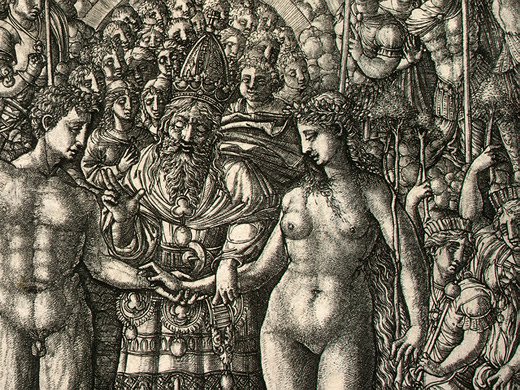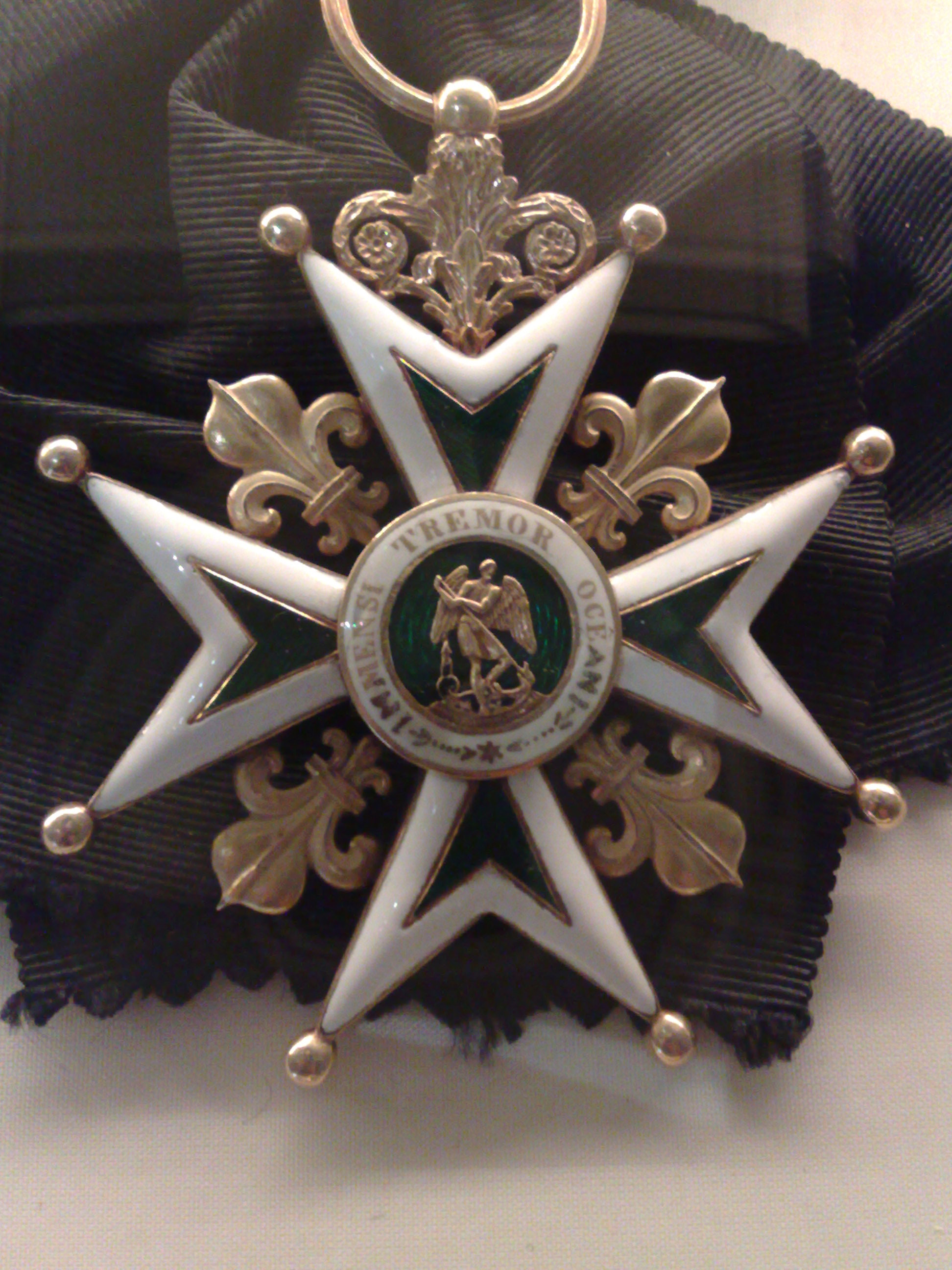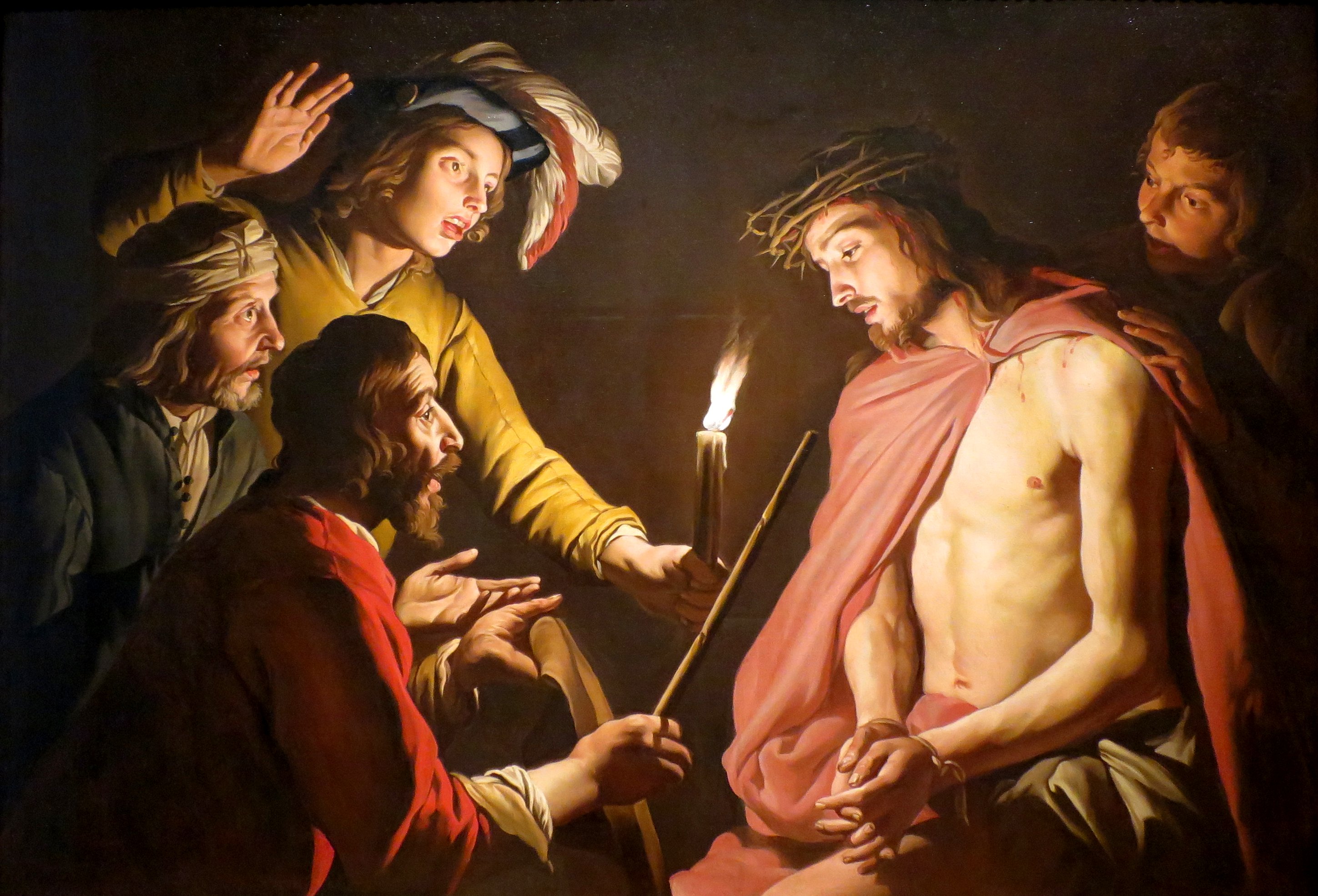|
Jean Duvet
Jean Duvet (1485 – after 1562) was a French Renaissance goldsmith and engraver, now best known for his engravings. He was the first significant French printmaker. He produced about seventy-three known plates, that convey a highly personal style, often compared to that of William Blake, with very crowded compositions, a certain naive quality, and intense religious feeling. According to Henri Zerner, his work has a "freedom and immediacy that have no equivalent in Renaissance printmaking".Grove Art Online (accessed October 5th, 2007) A degree of mystery surrounds his biography, as there is disagreement as to whether or not he was the Jean Duvet from Dijon who spent sixteen years in the militantly Calvinist city-state of Geneva. Life He was born to a Dijon goldsmith in 1485, presumably in Dijon itself, which until a decade before had been part of the independent state of the Duchy of Burgundy. He became a master of the Dijon Goldsmiths' guild in 1509, and may have travelled ... [...More Info...] [...Related Items...] OR: [Wikipedia] [Google] [Baidu] |
Putto
A putto (; plural putti ) is a figure in a work of art depicted as a chubby male child, usually naked and sometimes winged. Originally limited to profane passions in symbolism,Dempsey, Charles. ''Inventing the Renaissance Putto''. University of North Carolina Press, Chapel Hill and London, 2001. the putto came to represent the sacred cherub (plural cherubim), and in Baroque art the putto came to represent the omnipresence of God. A putto representing a cupid is also called an amorino (plural amorini) or amoretto (plural amoretti). Etymology The more commonly found form ''putti'' is the plural of the Italian word ''putto''. The Italian word comes from the Latin word ''putus'', meaning "boy" or "child". Today, in Italian, ''putto'' means either toddler winged angel or, rarely, toddler boy. It may have been derived from the same Indo-European root as the Sanskrit word "putra" (meaning "boy child", as opposed to "son"), Avestan ''puθra''-, Old Persian ''puça''-, Pahlavi (Middle P ... [...More Info...] [...Related Items...] OR: [Wikipedia] [Google] [Baidu] |
Huguenot
The Huguenots ( , also , ) were a religious group of French Protestants who held to the Reformed, or Calvinist, tradition of Protestantism. The term, which may be derived from the name of a Swiss political leader, the Genevan burgomaster Bezanson Hugues (1491–1532?), was in common use by the mid-16th century. ''Huguenot'' was frequently used in reference to those of the Reformed Church of France from the time of the Protestant Reformation. By contrast, the Protestant populations of eastern France, in Alsace, Moselle, and Montbéliard, were mainly Lutherans. In his ''Encyclopedia of Protestantism'', Hans Hillerbrand wrote that on the eve of the St. Bartholomew's Day massacre in 1572, the Huguenot community made up as much as 10% of the French population. By 1600, it had declined to 7–8%, and was reduced further late in the century after the return of persecution under Louis XIV, who instituted the ''dragonnades'' to forcibly convert Protestants, and then finally revoked ... [...More Info...] [...Related Items...] OR: [Wikipedia] [Google] [Baidu] |
Edict Of Châteaubriant
The Edict of Châteaubriant, issued from the seat of Anne, duc de Montmorency in Brittany, was promulgated by Henri II of France, 27 June 1551. The Edict was one of an increasingly severe series of measures taken by Henry II against Protestants, whom he regarded as heretics. In the preamble, the Edict frankly reported that previous measures against heresy in the kingdom had proved ineffectual. "Heretics", the Edict reported, met in conventicles, infected schools, invaded the judicial bench and forced toleration upon judges. To ensure more rigorous judgements, in 1547 Henri had already created a special judicial chamber drawn from members of the ''parlements'', solely to judge cases of heresy (called by Protestants the ''Chambre Ardente'' (the "Burning Chamber"). The Edict contained quite detailed provisions: it called upon the civil and ecclesiastical courts to detect and punish all heretics, and placed severe restrictions on Protestants, including loss of one-third of property gr ... [...More Info...] [...Related Items...] OR: [Wikipedia] [Google] [Baidu] |
Order Of Saint Michael
, status = Abolished by decree of Louis XVI on 20 June 1790Reestablished by Louis XVIII on 16 November 1816Abolished in 1830 after the July RevolutionRecognised as a dynastic order of chivalry by the ICOC , founder = Louis XI of France , higher = Order of the Holy Spirit , lower = Order of Saint Louis , image2 = , caption2 = Ribbon of the Order The Order of Saint Michael (french: Ordre de Saint-Michel) is a French dynastic order of chivalry, founded by King Louis XI of France on 1 August 1469, in competitive response to the Order of the Golden Fleece founded by Duke Philip the Good of Burgundy, Louis' chief competitor for the allegiance of the great houses of France, the dukes of Orléans, Berry, and Brittany. As a chivalric order, its goal was to confirm the loyalty of its knights to the king. Originally, there were a limited number of knights, at first thirty-one, then increased to thirty-six including the king. An office of Provost was established in 1476. The Ord ... [...More Info...] [...Related Items...] OR: [Wikipedia] [Google] [Baidu] |
Passion (Christianity)
In Christianity, the Passion (from the Latin verb ''patior, passus sum''; "to suffer, bear, endure", from which also "patience, patient", etc.) is the short final period in the life of Jesus Christ. Depending on one's views, the "Passion" may include, among other events, Jesus' triumphal entry into Jerusalem, his cleansing of the Temple, his anointing, the Last Supper, Jesus' agony in the Garden, his arrest, his Sanhedrin trial, his trial before Pontius Pilate, his crucifixion and his death on Good Friday, his burial, and the resurrection of Jesus. Those parts of the four canonical Gospels that describe these events are known as the "Passion narratives". In some Christian communities, commemoration of the Passion also includes remembrance of the sorrow of Mary, the mother of Jesus, on the Friday of Sorrows. The word ''passion'' has taken on a more general application and now may also apply to accounts of the suffering and death of Christian martyrs, sometimes using the ... [...More Info...] [...Related Items...] OR: [Wikipedia] [Google] [Baidu] |
Judas Iscariot
Judas Iscariot (; grc-x-biblical, Ἰούδας Ἰσκαριώτης; syc, ܝܗܘܕܐ ܣܟܪܝܘܛܐ; died AD) was a disciple and one of the original Twelve Apostles of Jesus Christ. According to all four canonical gospels, Judas betrayed Jesus to the Sanhedrin in the Garden of Gethsemane by kissing him on the cheek and addressing him as " master" to reveal his identity in the darkness to the crowd who had come to arrest him. His name is often used synonymously with betrayal or treason. The Gospel of Mark gives no motive for Judas's betrayal, but does present Jesus predicting it at the Last Supper, an event also described in all the other gospels. The Gospel of Matthew states that Judas committed the betrayal in exchange for thirty pieces of silver. The Gospel of Luke and the Gospel of John suggest that he was possessed by Satan. According to , after learning that Jesus was to be crucified, Judas attempted to return the money he had been paid for his betrayal ... [...More Info...] [...Related Items...] OR: [Wikipedia] [Google] [Baidu] |
Jean De Tournes
Jean de Tournes (1504 – 1564) was a French printer, book publisher and bookseller, and the founder of a long-lasting family printing business. From 1559 he was the , printer to the French king. Life Jean de Tournes was born in Lyon in 1504. He was apprenticed in the printing workshop of Gaspard and Melchior Trechsel, and then worked for about ten years as a compositor in the workshops of Sébastien Gryphe. In 1542 de Tournes set up his own shop, where from 1547 until 1563 he was in partnership with his son-in-law Guillaume Gazeau. He was a learned humanist, and published accurate editions of works of both ancient and modern authors. Until 1547 he employed the engraver Georges Riverdy for illustrated works; after that date he used the noted engraver Bernard Salomon. He converted to Protestantism in about 1545. Jean de Tournes died of plague in Lyon on 7 September 1564. He was succeeded in the business by his son Jean de Tournes. In 1585 the family and the printing wor ... [...More Info...] [...Related Items...] OR: [Wikipedia] [Google] [Baidu] |
French Wars Of Religion
The French Wars of Religion is the term which is used in reference to a period of civil war between French Catholics and Protestants, commonly called Huguenots, which lasted from 1562 to 1598. According to estimates, between two and four million people died from violence, famine or diseases which were directly caused by the conflict; additionally, the conflict severely damaged the power of the French monarchy. The fighting ended in 1598 when Henry of Navarre, who had converted to Catholicism in 1593, was proclaimed Henry IV of France and issued the Edict of Nantes, which granted substantial rights and freedoms to the Huguenots. However, the Catholics continued to have a hostile opinion of Protestants in general and they also continued to have a hostile opinion of him as a person, and his assassination in 1610 triggered a fresh round of Huguenot rebellions in the 1620s. Tensions between the two religions had been building since the 1530s, exacerbating existing regional divisi ... [...More Info...] [...Related Items...] OR: [Wikipedia] [Google] [Baidu] |
Langres
Langres () is a commune in northeastern France. It is a subprefecture of the department of Haute-Marne, in the region of Grand Est. History As the capital of the Romanized Gallic tribe known as the Lingones, it was called Andematunnum, then Lingones, and now Langres. A hilltop town, Langres was built on a limestone promontory of the same name. This stronghold was originally occupied by the Lingones. At a later date the Romans fortified the town, which they called Andemantunum, located at a strategic crossroads of twelve Roman roads. The first-century Triumphal Gate and the many artefacts exhibited in the museums are remnants of the town's Gallo-Roman history. After the period of invasions, the town prospered in the Middle Ages, due in part to the growing political influence of its bishops. The diocese covered Champagne, the Duchy of Burgundy, and Franche-Comté, and the bishops obtained the right to coin money in the ninth century and to name the military governor of the city ... [...More Info...] [...Related Items...] OR: [Wikipedia] [Google] [Baidu] |






